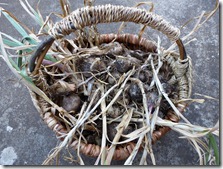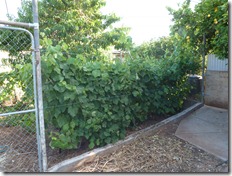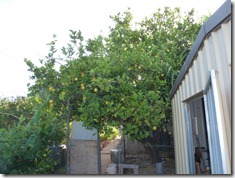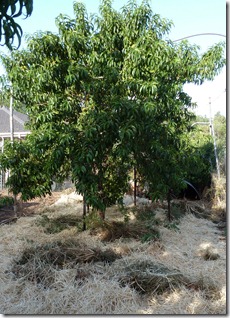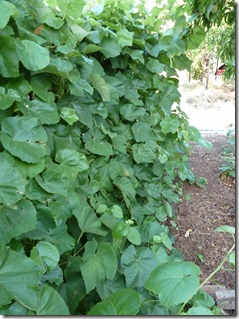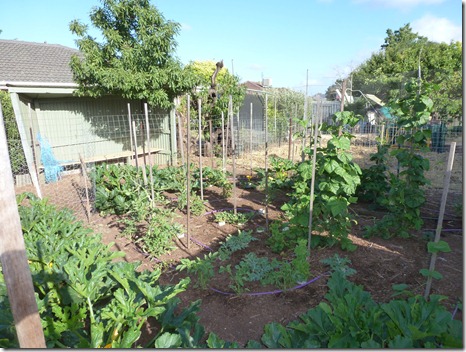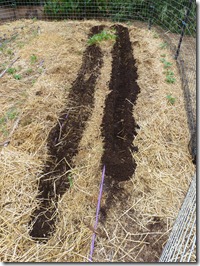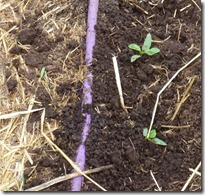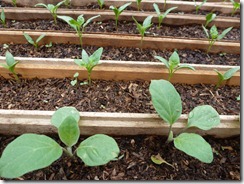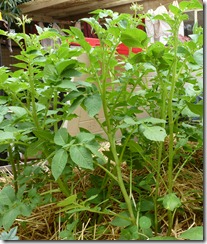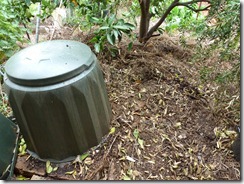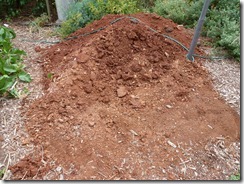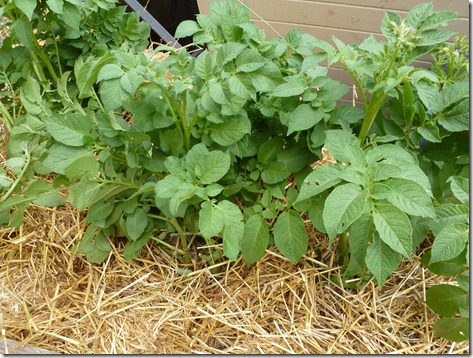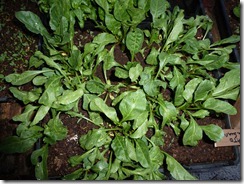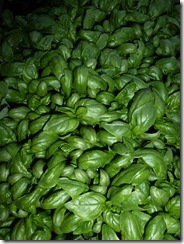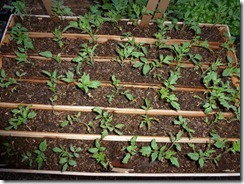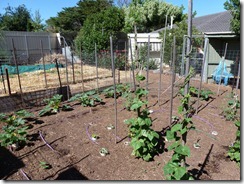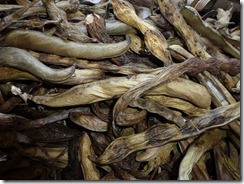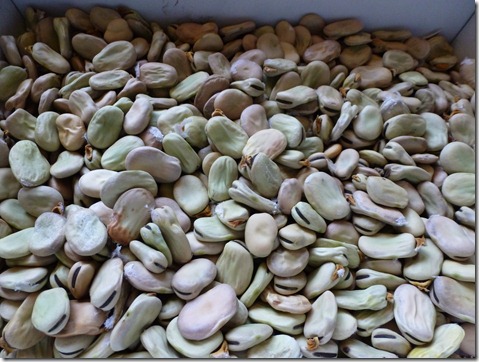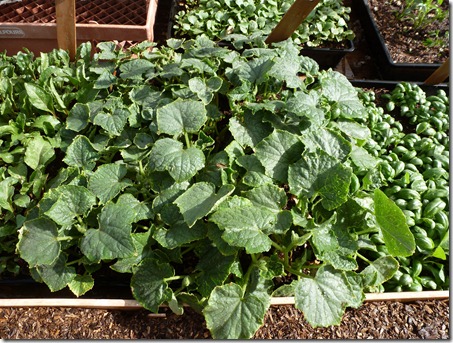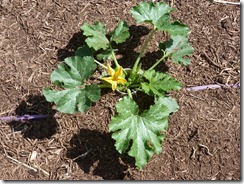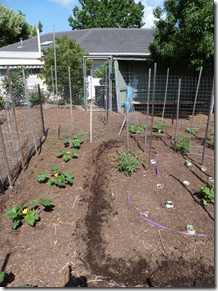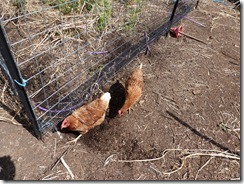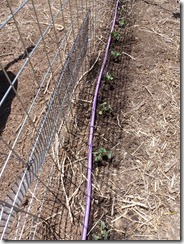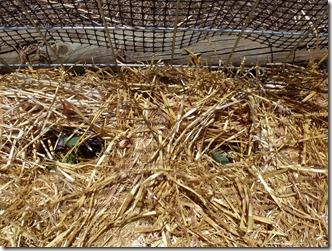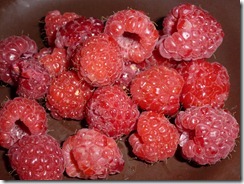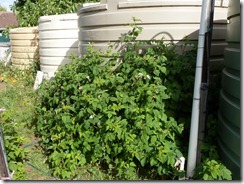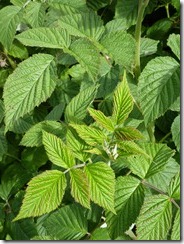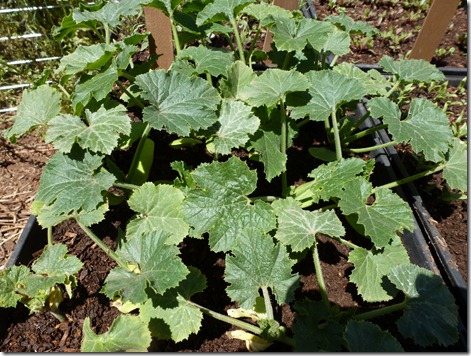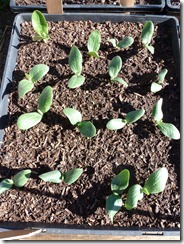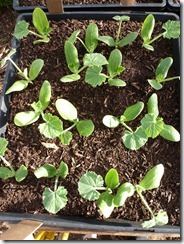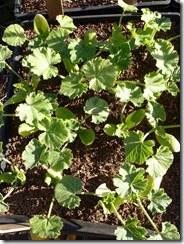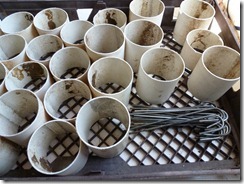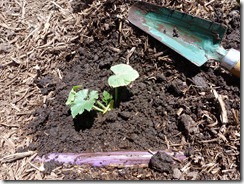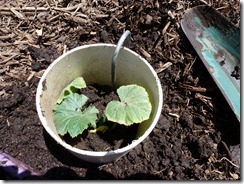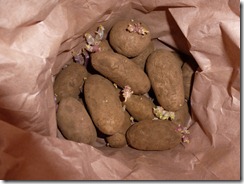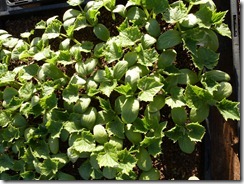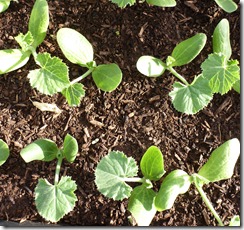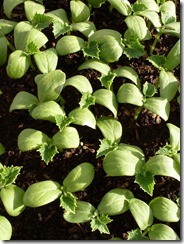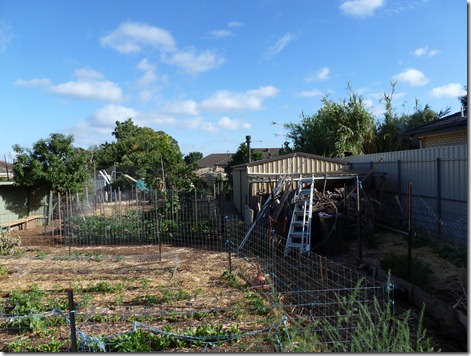 Christmas morning dawned to perfect weather, and in this brief moment of quiet while the world sleeps, I’ve got into the habit of touring the garden to take stock of how the summer growing season is progressing.
Christmas morning dawned to perfect weather, and in this brief moment of quiet while the world sleeps, I’ve got into the habit of touring the garden to take stock of how the summer growing season is progressing. 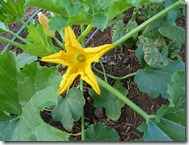 This small reflective tour helps me get some perspective on this important facet of our life; cook and gardener are in complete accord when we come to providing fresh home-grown fruit and vegetables for our kitchen table. No matter that our budget of time and money is heavier in this department than most folks – the garden and the nutritious food that it produces is part of our lifestyle.
This small reflective tour helps me get some perspective on this important facet of our life; cook and gardener are in complete accord when we come to providing fresh home-grown fruit and vegetables for our kitchen table. No matter that our budget of time and money is heavier in this department than most folks – the garden and the nutritious food that it produces is part of our lifestyle.
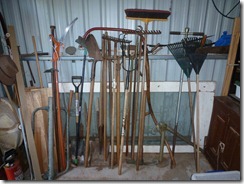 There are no jobs to be done, so all the tools are back in the shed. Everything has been organised to carry the garden through Christmas Day and Boxing Day while we deal with 22 folk coming to lunch and the arrival of two of our three sons and their partners and friends from Melbourne and overseas.
There are no jobs to be done, so all the tools are back in the shed. Everything has been organised to carry the garden through Christmas Day and Boxing Day while we deal with 22 folk coming to lunch and the arrival of two of our three sons and their partners and friends from Melbourne and overseas.
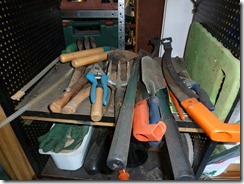 Harvest is still a few months away – around March – although the zucchinis are already in flood. All the home-grown seedlings have been planted out and are now growing quickly in the long warm summer days here on the Adelaide Plains – melons, silverbeet, cucumbers, beetroots, tomatoes, basil, pumpkins,beans, onions, lettuce, capsicums, eggplants – the list goes on, as it does every year.
Harvest is still a few months away – around March – although the zucchinis are already in flood. All the home-grown seedlings have been planted out and are now growing quickly in the long warm summer days here on the Adelaide Plains – melons, silverbeet, cucumbers, beetroots, tomatoes, basil, pumpkins,beans, onions, lettuce, capsicums, eggplants – the list goes on, as it does every year.
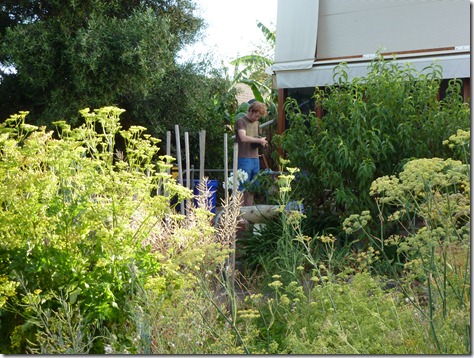 There are really two gardens in operation this year; the production garden down the back of the property (photo at top) and the ‘seeds garden’ where scruffy plants – parsnips, celery, kale, parsley, broccoli and such like - have burst forth into flower during their second spring, to be head-high now and covered with seeds that will refresh my seed stock for many years to come. More detail on these later this week…
There are really two gardens in operation this year; the production garden down the back of the property (photo at top) and the ‘seeds garden’ where scruffy plants – parsnips, celery, kale, parsley, broccoli and such like - have burst forth into flower during their second spring, to be head-high now and covered with seeds that will refresh my seed stock for many years to come. More detail on these later this week…
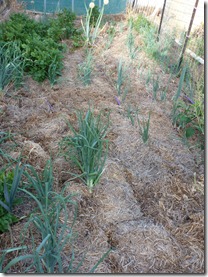 Down in the onion patch, the garlic has just been harvested while the onions still need a month or more of warm weather to finish.
Down in the onion patch, the garlic has just been harvested while the onions still need a month or more of warm weather to finish.
In the orchard, red and white table grapes are forming green walls amidst peach trees laden with fruit, while the lemon tree is still carrying about a ton of fruit that we have no idea how to use.
Over in the potato beds, the ‘Dutch Cream’ potato plants are flowering – a sign the potato tubers are now forming underground. Only when these plants die back will I begin to think of digging for their harvest.
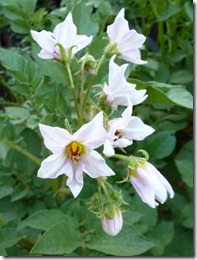 And what do I make of all this?
And what do I make of all this?
My main concern is water, and just how much it takes to produce so little food for the table. For most of us townsfolk, this cost is out of sight behind supermarket price-tags – professional farmers pay about 1/10 of the water price I do because I’m farming in the suburbs and using town water rather than river water.
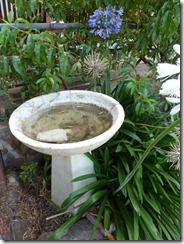 While I’m convinced that I can grow almost anything I need here in this climate and on these soils, I’ve still about a decade of learning ahead to come to grips with backyard farming on half my current water consumption. That will mostly mean better handling and distribution of mulch to keep the soil covered from winter onwards – no mean feat when crop rotations are going on.
While I’m convinced that I can grow almost anything I need here in this climate and on these soils, I’ve still about a decade of learning ahead to come to grips with backyard farming on half my current water consumption. That will mostly mean better handling and distribution of mulch to keep the soil covered from winter onwards – no mean feat when crop rotations are going on.
Ah well – Happy Christmas! I expect that I’ll be better at this by next year. Now its time to sit in my garden shelter and look out at this year’s efforts before the Christmas rush begins…

